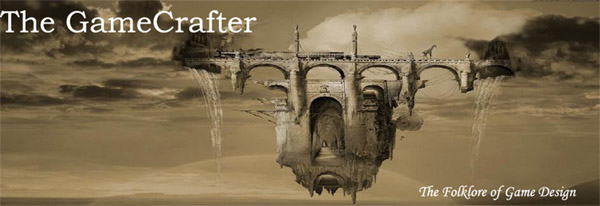We talked a few posts ago about dynamic environments, and about focusing on guilds, and recently about the vision of a game publishing service.
Let us tie all of these together into a single bundle and discuss how they play together. What I am describing to you is Digital Lore, and the Lore Crafting Game System I worked on for several years with Dr. Paul Sincock.
The offering was initially a MMORPG game, much like about a hundred other offerings out there at first glance. But with a big twist. The twist was in addition to the game offering, the player also received the Lore Crafting Game System and was encouraged to delve into their creativity to develop additional offerings.
There were three interfaces. The first one was the one you played the game with, the second was the one you developed your game world with, and the last one was the GM interface that allowed the player to interact with the live offering they had created and published.
From the player perspective they launched the program, signed-on and connected to the game service. The first menu they viewed the various games they could play, a list of recently visited and favorites. Once the offering was in full swing, there would be thousands of offerings. The player selected their choice and one of three things would happen.
!) They are connected to the on-line game choice.( These are games hosted by the game service.)
2) They were taken to a download page to download a single player game.
3) They would begin playing a previously downloaded single player game.
It is pretty straightforward from the player perspective, which is essential for success. The service infrastructure would allow the player to play these games if their account was active, inclusive of the local single player games. The service infrastructure also would record the time the player spent on a given title playing it, regardless if the title was a local offering or an on-line offering.
The second interface is the GM interface, which allows a developer/Game-master to view their on-line offering as the players are playing it. This interface is game-like, and allows them to create or modify spheres of influence, spawn points and well as to perform administrative tasks such as moving stuck players, and to deal with game related customer service issues.
The last interface is the world creation interface that allows the high-end player to create a game world, populate it, create dialogue etc. It is essential that this interface be aimed at, available for and usable by, the high end gamer and not a developer. The goal here is to lower the barrier to entry for storytellers, game designers and creative people who are not necessarily programmers to be able to use this tool to express their creative ideas.
There are many questions and objections folks have at this point so I will address them as I best remember them.
Who owns the intellectual property? This is somewhat of a departure from current thought so please engage me here. The creative intellectual property belongs to the writer or designer of the game. He owns it all of the property and the company owns the actual bits and bytes on the servers which they LEASE to the designer for use to host his designs. The same concept applies to players. A Designer owns the player’s characters data and information which they in turn LEASE to the player, in exchange for monthly fees. The terms of the lease allow the player to change, modify or dispose of the data associated with that character. This approach is designed to head off the future legal issues surrounding the ownership and virtual crime questions that will be bubbling up in the next decade.
What happens if the designers decide to drop the service? Then they drop the service and the game offering is removed from the stack. No harm, no foul.
I can see hundreds of lousy titles being offered, how do you deal with that? The company creates a rating system as well as a usage system that yields both performance data (how much usage a title generates) as well as a rating system (how well the player community likes a given title.. one vote per month.). The rating and performance information are transparent to all players and is used as a search parameter for choosing titles. The company must maintain a given threshold of acceptability, as well as a delineation of “Alpha”, “Beta” and “Release” offerings/servers and time associated with them before they are dropped from the stack. The idea here is that if a designer uploads an offering, it has to meet either acceptability (player community) standards or performance (usage) standards or it will be dropped from the stack.
Do you think that these player designers can create offerings that 50,000 people will play? A few will, the majority will not. Analysis of game communities, guilds and so forth show clearly that a player will generally interact with a few dozen other players on a semi-regular basis. Huge servers with tens of thousands of players are a product of static product based offerings. This service concept promotes many smaller game worlds played on more standard servers. This lowers the cap of the game world player population, and allows less expensive systems to run the servers. It also promotes an encapsulation of the niche markets that would never see mainstream release as only several thousand people would ever play the game.
Who else is doing this? Who are your direct competitors? There are two other company’s that have tried this to date, and they were unsuccessful in their offering in that they had to modify their business plan and work in different ways to stay in business. Both tried to aim at the low end developer instead of the high end player. Both offered a standard interface, but only half the infrastructure. In short, they offered to be the general infrastructure of the MMORPG and gave toolsets, and provide a billing structure. They did not provide art assets (the largest barrier to entry for writers and storytellers and game designers), they did not provide a service model that benefited both the player and the designer. In short they tried to market a service to game developers that provided a marginal value that saved them effort in the short term, but was not a value in the long term.
What makes this different from other on-line games? It is all about the player, and reaching the right market and providing value. Players now spend $15.00 a month (give or take a few dollars), to play a single offering. Compare this to $15.00 a month to have the opportunity to play dozens, or even hundreds of games per month. The value greatly overshadows traditional product based offerings. Besides this, by utilizing the dynamic game environment aspects of this service offering, the designers can offering something now that is completely missing from other traditional titles. That is meaning. The players now have ways to interact with the game world that changes the game world. This will bring back a very large portion of gamers who have stopped playing these types of games because they realized that what they had no point, no value to other people or to themselves and had no meaning. Nothing ever changed.
How do you compete against other large offerings such as WOW?
The model that the product based offerings such as WOW provides are not sustainable. They will fail. They are forced to create a content pipeline and that content is consumed at an ever-increasing rate. You hear stories of people taking time off from work for a two-weeks when a new “add-on” is released and then finishing it in days. Then they face 18 months for the next release, and they will only do this a few times before they “drift” to another offering.
Another large portion of players play WOW for the social interaction with their real life friends. Consensus is high that the game is weak and they tolerate it because their friends play. Yet, WOW yields very few tools in the game that help strengthen and maintain these bonds.
The Game Publishing Service approach solves both of these issues and generates additional benefits as well.
Content: This is perhaps the largest advantage that the Game Publishing Service approach gives. Not only does it create a platform where thousands of offerings can be maintained, these offerings often will create much their own content dynamically. Meaning that the players can create the “situation” of their game word or scenario, and generate the possibilities of what may happen, but most of the time and effort of the game offering is generated by itself. Further, the individual designers and developers will guide the theme and provide additional content with it is needed.
Players: The strong hooks into the game system itself which is part of the tool kit and publishing service can give guilds reasons to band together and perform specific tasks in the various game simulations. In short, it helps give meaning and shared purpose which is non-existent in 99% of the game offerings out there today. This can perhaps be better illustrated in the following manner. Imagine that we have a group of teenagers that go down to the local park and hang out. They don’t do anything in particular, but just socialize, hang out and occasionally perform shared activities that help one member or another. They can hang out at this park, another park, the mall or at one of their houses and have the same effect. Now imagine that when they are at the park, they are a team that has a shared goal. They discuss strategy, are, as a group, competitive against other groups and pay attention to each other, how they are equipped, what they wear how they do certain tasks as all of these are factors to be successful in the park. In short, they not only socialize, but depend upon each other in a larger shared context. The richness of the social interaction is greatly increased. They have meaning and reason to be in the park as opposed to somewhere else.
More soon..
Jim
Wednesday, January 7, 2009
Subscribe to:
Post Comments (Atom)





No comments:
Post a Comment